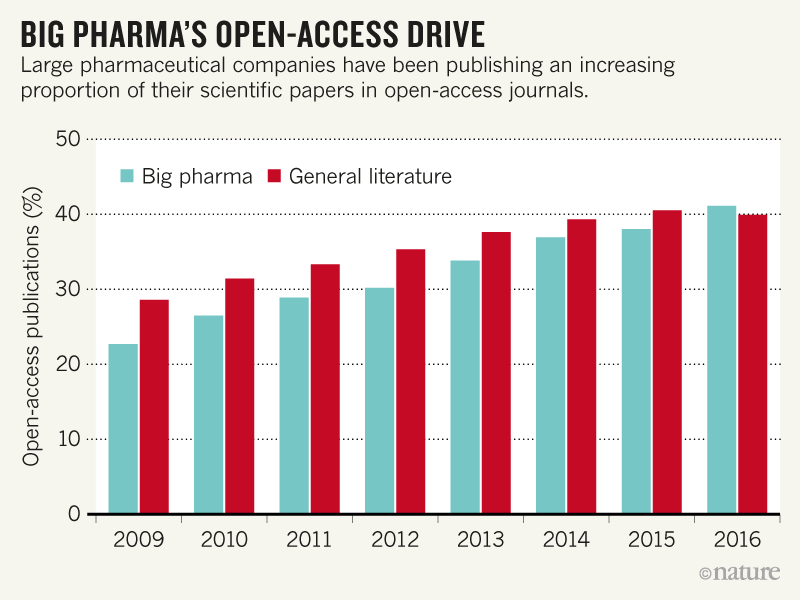Over 10 years experience of Traceability Solutions

By pharmatrax
Category: News
 No Comments
No Comments
Proportion of open-access publications with authors from the pharmaceutical industry doubled between 2009 and 2016.
Scientists who work in the pharmaceutical industry have begun to publish a higher proportion of their papers open access than academics who aren’t in industry, according to an analysis.
In a literature analysis, researchers found that the proportion of open-access papers published by 23 large drug companies, such as Pfizer and Roche, almost doubled between 2009 and 2016, and has overtaken the proportion of freely available papers published generally in medicine-related fields. The study was posted to the SocArXiv preprint server on 7 February1.
“It seems like big pharma has a notable niche in open access,” says Kyle Siler, a social scientist at Utrecht University in the Netherlands, who was not involved in the research. The trend towards open-access publishing doesn’t apply only to university academics, he says. “It’s another story of how it’s successfully diffused.”
Alfredo Yegros and Thed van Leeuwen, information scientists at Leiden University in the Netherlands, trawled through papers listed on the Web of Science database published during the 8-year period and chose those that included at least one author from one of 23 firms.
The researchers classified each paper according to whether or not it was open access. To see how this compared with the medical literature more generally, they also examined all publications in medicine-related categories — including those that didn’t have industry authors.
The authors found that in 2009, the proportion of open-access papers published by drug companies was just over 20% — lower than the 29% found in the medical literature baseline (see ‘Big pharma’s open-access drive’).

But over the next 7 years the percentage of open-access papers from the industry steadily increased to more than 40% in 2016, the first year in which it exceeded the proportion of open-access articles in the general medical literature.
As well as producing more freely available papers, industry is consuming more of them. The percentage of open-access papers cited in industry publications rose from 35% in 2009 to around 47% in 2016. During this period, the proportion of open-access papers cited in the general literature remained at around 33%. But the authors only looked at papers published since 2009, which represent only a fraction of all cited publications.
The researchers also found that industry and non-industry authors published more of their open-access papers through the ‘green’ route, in which a scientist makes a paper available in a repository such as bioRxiv, rather than through the ‘gold’ route, in which a paper can be accessed freely from a publisher. The proportion of gold papers has increased considerably in the past few years, but industry lags behind this general trend.
Yegros says that he hadn’t seen any analysis of open-access publishing in the industry before, so he had no expectations about what he might find. The fairly high rate raises questions, such as what the industry’s motivation is to publish as open access — something the researchers are now exploring.
Publishing openly reaches those involved in the drug industry who aren’t necessarily affiliated with universities and might not have access to expensive journal subscriptions, says Siler.
Industry’s greater emphasis on green open access might also reflect a strategy of getting information out quickly, rather than worrying about publishing in high-profile journals. “They don’t need the imprimatur of prestigious journals,” Siler says. “They’re not playing the academic status game.”